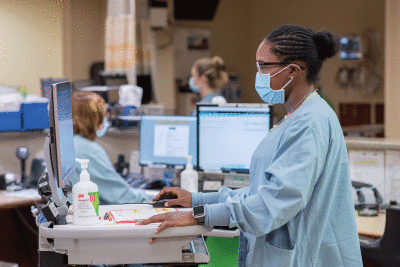METRO DETROIT — Numerous industries across the country are reporting staffing shortages or an inability to fill open positions in their workforce. Metro Detroit has not been an exception.
Bill Griffin, the co-owner of Griffin’s Neighborhood Auto Clinic in Farmington Hills, said that his business is one of many in the metro Detroit area that is having trouble maintaining a full staff.
“We’re seeing a shortage. More for automotive technicians than anything else,” he said. “It just seems like every position takes a lot more to fill than before. It’s become common for people to not even answer you back for an interview. It’s forced us to think about our hiring process more. We’re going through hiring companies and advertising open positions more and so forth.”
The Michigan Restaurant and Lodging Association conducted a survey showing that, in 2021, 88% of hospitality industry respondents were operating with inadequate staffing to meet consumer demand. This included 100% of banquet facilities, 97% of hotels, 89% of full-service restaurants, 81% of quick-service restaurants and 67% of bars and nightclubs. Although some staffing issues have become less severe as COVID-19 becomes less of a workforce problem, the MRLA stated that all of these businesses are still reporting shortages.
The health care industry has also been hit hard, particularly after being stretched thin during the pandemic. Even Henry Ford Health System, one of the largest job providers in southeast Michigan, is saying that it is still experiencing staffing shortages.
“Yes, we are definitely seeing staffing shortages,” said Chief Nursing Officer Eric Wallis. “There are a couple of areas we’re seeing particular shortages. There’s a million-nurse shortage across the country. We’re also seeing some shortages in some of our more technical areas. (Additionally), we’re seeing shortages in the post-COVID world in entry-level or support roles like housekeeping or food services.”
Wallis said that it isn’t unusual for segments of a workforce as large as Henry Ford’s to experience staffing deficiencies, but these normally only affect one area at a time; now it appears to be happening across virtually every industry and staffing area.
“We tend to see these shortages in segments. We would have these shortages appear in shifts where there might be shortages in nursing or in housekeeping,” he explained. “What’s different this time is we’re seeing shortages in all of these areas at once. People often view health care as a stable industry, which might protect us from most cyclical shortages, but this shortage is different.”
Griffin said that a factor for businesses like his own is that there isn’t a large enough pool of trained and skilled trade professionals.
“As far as my industry goes, the real big factor is that there aren’t enough people going into the technicians these days, and those who already are technicians have good, well-paying positions, since they are so hard to replace. It’s a shrinking pool of available bodies,” he said.
This new lack of workers has caused many employers to change their tactics when it comes to hiring.
“We’ve talked about holding in-house job fairs and posting ads in local spaces like churches and community centers,” said Griffin. “We’re using social media more to try and get more exposure.”
Wallis added that even large businesses are needing to rethink how to attract talent and reach out to potential employees.
“COVID changed the dynamic of the workforce. Henry Ford was one of the first health systems to raise our minimum wage, which we’re very proud of, but we still have to respond to the changing status quo,” he said. “People are looking for new career paths or new aspects in jobs. How is transportation affecting people’s availability? Are they looking for jobs or are they looking for careers? How are they looking to integrate their job into their personal lives? ... The question is how to lure people back to the workforce after things changed so much for so many people.”
Wallis went on to say that many large businesses are having to take extra steps to make sure that, in a market where employers have to compete for talent, they are making a job seem as appealing as possible.
“The really unique thing about this time in this region and in our market is that so many industries are experiencing the same issues and competing for the same talent. A challenge is how to position yourself as the employer of choice.”
Griffin hopes this will convince people, especially high school students preparing to enter the workforce, to consider paths they may not have thought of before.
“My message for people is to bring some more awareness to their local communities and what jobs are there,” he said. “I also hope we can reach out more to high school students to explore trade careers. They are often well paying and very stable. We had a generation not going into trade careers, and I think that’s really catching up with us now.”
 Publication select ▼
Publication select ▼




















